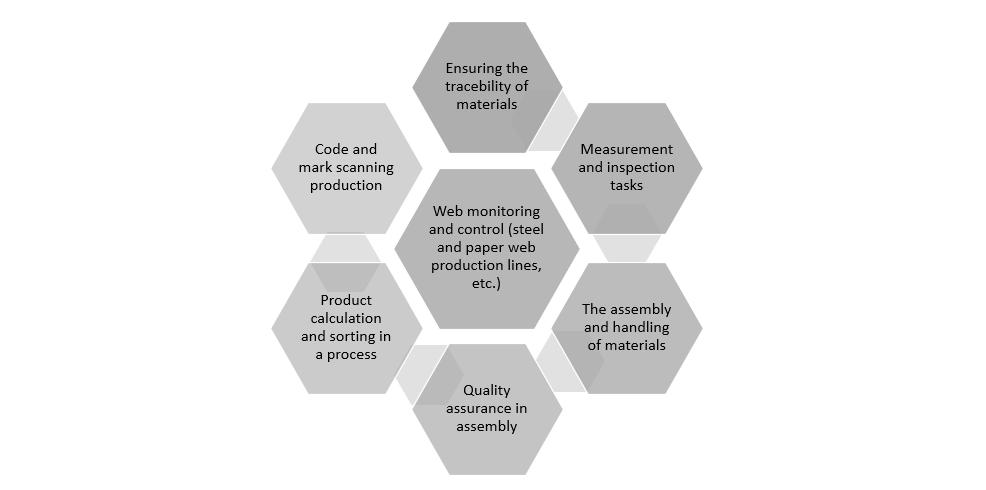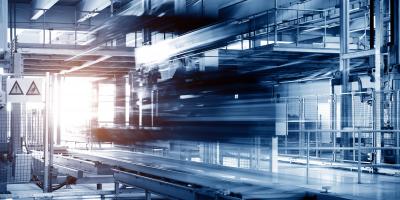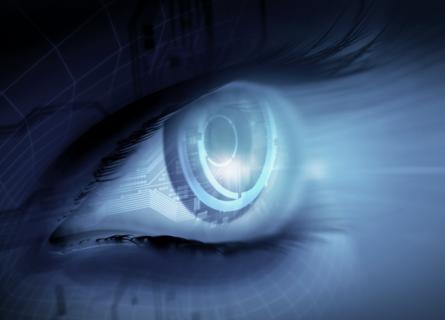
Machine Vision systems create versatile and efficient solutions in the industry
Digital tools, machine learning systems and intelligent software applications have become more common in recent years as they have taken a bigger role in production processes. Thus, it is essential to know how to utilize them and get the most benefit.
Production control is constantly developing towards digitalization and self-direction. Machine vision systems and technologies are an important part of the basis of the production, and without these intelligent sensors, data collection for controlling production would be nearly impossible. Therefore, we will explain the meaning of machine vision and present four key factors which make machine vision systems particularly important for industrial companies.
Key factors in machine vision system application:
- There are nearly unlimited areas of application
- The efficiency is increased and profitability improved
- Intelligent solutions replace human in decision-making
- Investing in the design state of machine vision project is worthwhile
Machine vision systems have nearly unlimited areas of application
Machine vision technology is rapidly evolving and it can be applied widely in different sectors. Microscopically accurate machine vision enables acquiring real-time information regarding the production as well as the shapes, colors and surface structure of the products, for instance. Imaging-based on machine vision can be utilized in measuring, production control and analysis, quality control, and optimization, of which it can produce digital information efficiently.
Areas of application

Machine vision systems increase efficiency and improve profitability
It is not simple to run a production company, as it requires comprehensive control and optimization of a multidimensional entity. With machine vision, several challenges can be solved at once, while profitability, quality and efficiency of operations increase. It is possible to achieve a 10% production increase and reduce material losses by 25%–50%.
The increase of production is mainly due to an increase in the production rate and improved efficiency. The production rate can be increased when items are produced and inspected at an increased speed compared to the speed and accuracy of the human eye, as machine vision reduces material loss when quality defects can be tackled in time and materials can be used as efficiently as possible. Human resources that become available from quality control tasks can be used elsewhere, which leads to cost savings.
Intelligent and advanced machine vision systems replace both human eye and human decision-making
A machine vision system can have a simple structure. It may consist of a camera that sends data to a computer for analysis. However, a machine vision solution can also include a notably larger entity connected to production control, automation and robotics, running and optimizing the whole production virtually independently.
A combination of artificial intelligence and machine vision can also solve problems that would be too complicated to program in operating systems.
Artificial intelligence and machine learning are more and more frequently integrated into machine vision systems, along with technological development. This allows automation and production control systems to exploit information collected by machine vision in a more efficient way than before thanks to the algorithms of artificial intelligence that mine key figures from massive datasets to optimize and predict activities. A combination of artificial intelligence and machine vision can also solve problems that would be too complicated to program in operating systems or otherwise too heavy and awkward to maintain with traditional machine vision systems alone.

Investing in the design stage of a machine project is worthwhile
Even though a machine vision system can only include a compact smart camera, the benefits of machine vision can be maximized by applying the solution to different areas and items.
Since there is virtually an unlimited number of machine vision systems and related areas of application, a machine vision project typically starts from a pre-analysis and design step, during which the measurement method to be used in the system is defined together with the customer. In addition to the customer’s needs, the scope of the system and technological choices are determined based on the measurement conditions, for example. Lighting conditions, for instance, are one of the most critical aspects to consider when planning machine vision systems. It is also often a good idea to test the measuring methods and devices selected for use on a real-world production line, as well as collect raw data for the software development.
The most important part of the development of the machine vision system, in addition to specifying the machine vision technology to apply and the requirements of the application, is the design step. The design step is used to identify the most cost-efficient and sensible way to implement the solution.




